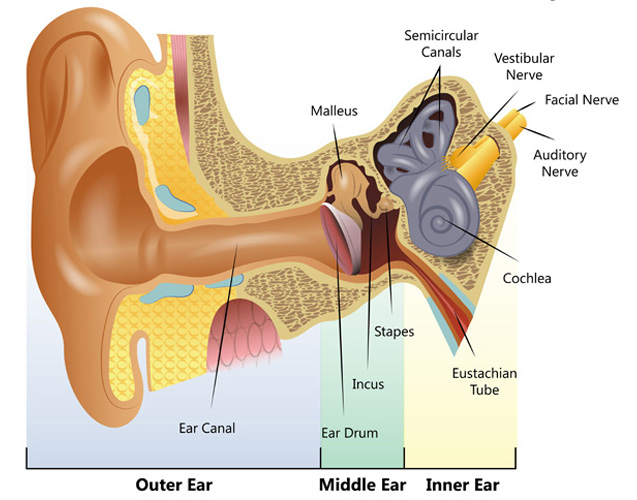Diagnostic Hearing Test — Comprehensive Hearing Evaluation
Hearing is complicated. There is a pathway of hearing from our ears to our brain. A hearing diagnostic test or hearing evaluation consists of many “little tests” that look at different parts of your ear and test different aspects of your hearing.
Hearing loss can be caused by problems in different parts of the ear and auditory pathway, such as ear wax, middle ear fluid, inner ear damage to the sensory cells from noise, genetic predisposition, medications, radiation, viral infection or pathologies, specific medical problems, hearing nerve degeneration, or cognitive decline. The whole aim of a hearing evaluation is to provide the doctors of audiology with a set of results that they can use to help determine exactly where the hearing loss takes place in the ear and the severity of it. We use this information to figure out how best to treat your hearing.
Some tests you’ll likely undergo:
- Pure-tone testing – looks at your ability to hear sounds and different pitches and volumes
- Speech testing – tests your ability to hear regular conversation sounds
- Tympanometry – test will show if you have any blockage in your ear canal, or any fluid build-ops and eardrum perforations
- Otoacoustic emissions – looks at the health of the hair cells in the cochlea
Diagnostic hearing tests are likely to be covered by your health insurance and we can verify your benefits before completing the test.

What the results tell you
Once the hearing testing is completed, our Doctors of Audiology will sit down with you and decide on the best treatment option depending on the type of hearing loss you are diagnosed with.
The 3 types of hearing loss you could have
Conductive Hearing Loss
Conductive hearing loss occurs when there is a blockage in the external ear canal (wax, perforated or ruptured eardrum, foreign object in the ear canal, cysts, abnormal growths, etc.) or due to chronic middle ear infections. The conductive hearing loss reduces the ability to hear at a normal hearing level, so volumes are much softer causing you to strain to hear. It can affect not just one but both of your ears. The good news is though, most cases of conductive hearing loss are temporary and can be treated.
Sensorineural Hearing Loss
Sensorineural hearing loss is the most common type of hearing loss, affecting 9 out of 10 people with hearing deficiencies. It indicates that there is damage to either the tiny hair cells in your inner ear (known as stereocilia) or to the nerve pathways that lead from your inner ear to the brain. It affects both the loudness and clarity of sounds, so speech in most cases is unclear. The result of your hearing loss can be mild, moderate, severe, or profound. Once you develop sensorineural hearing loss, you will have it for life. Proper testing and fitting of hearing aids are VITAL for treatment, as simply amplifying all sounds won’t help you hear better.

Mixed Hearing Loss
Mixed hearing loss occurs when a conductive hearing loss happens to pair up in timing with sensorineural hearing loss. This means that there is damage to the outer or middle ear and the inner ear or nerve pathway to the brain. Many with mixed hearing loss experience soft volumes and finds understanding speech difficult.


